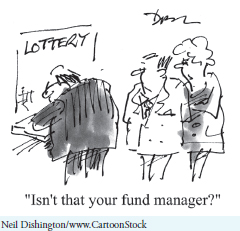CHAPTER 5
Discrete Probability Distributions
LEARNING OBJECTIVES
After completing the chapter, you should be able to
- Explain the nature of a probability experiment and define the role of a random variable.
- Construct a discrete probability distribution.
- Graphically display a discrete probability distribution and calculate associated summary measures.
- List the binomial conditions and use the binomial distribution to produce probabilities.
- List the Poisson conditions and use the Poisson distribution to produce probabilities.

EVERYDAY STATISTICS
Long History, Even Longer Odds
With hopes of winning the largest lottery jackpot in US history, Americans of every political, ethnic and economic persuasion spent nearly $1.5 billion on tickets for the 2012 Mega Millions lottery. That's about $5 in tickets for every man, woman, and child in the US. From among the tens of millions who purchased tickets, three lucky folks ended up sharing the $656 million jackpot. Each held tickets bearing the numbers 2, 4, 23, 38, and 46, and the “Mega” number 23. The probability of their picking this winning number? About 1 in 175 million!

These three odds-defying millionaires became part of the very long and storied history of public lotteries. The first recorded public lottery in the West was held ...
Get Understanding Business Statistics now with the O’Reilly learning platform.
O’Reilly members experience books, live events, courses curated by job role, and more from O’Reilly and nearly 200 top publishers.

